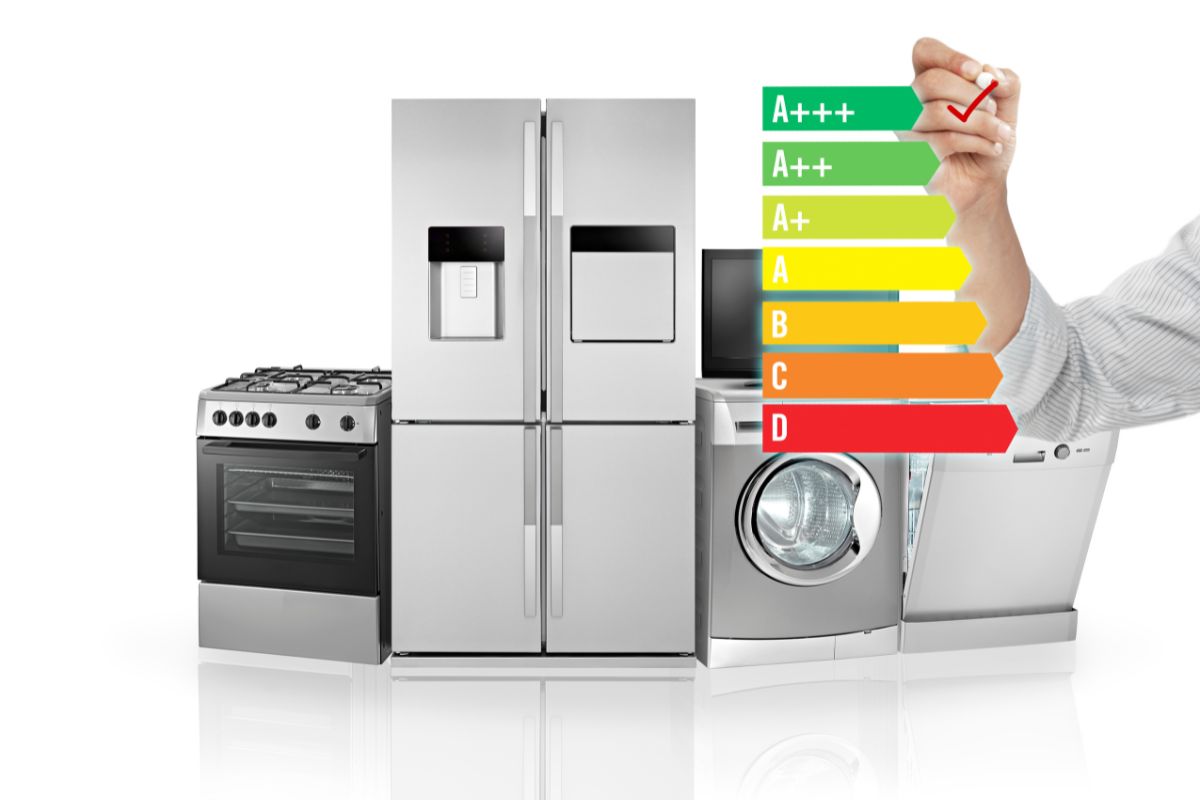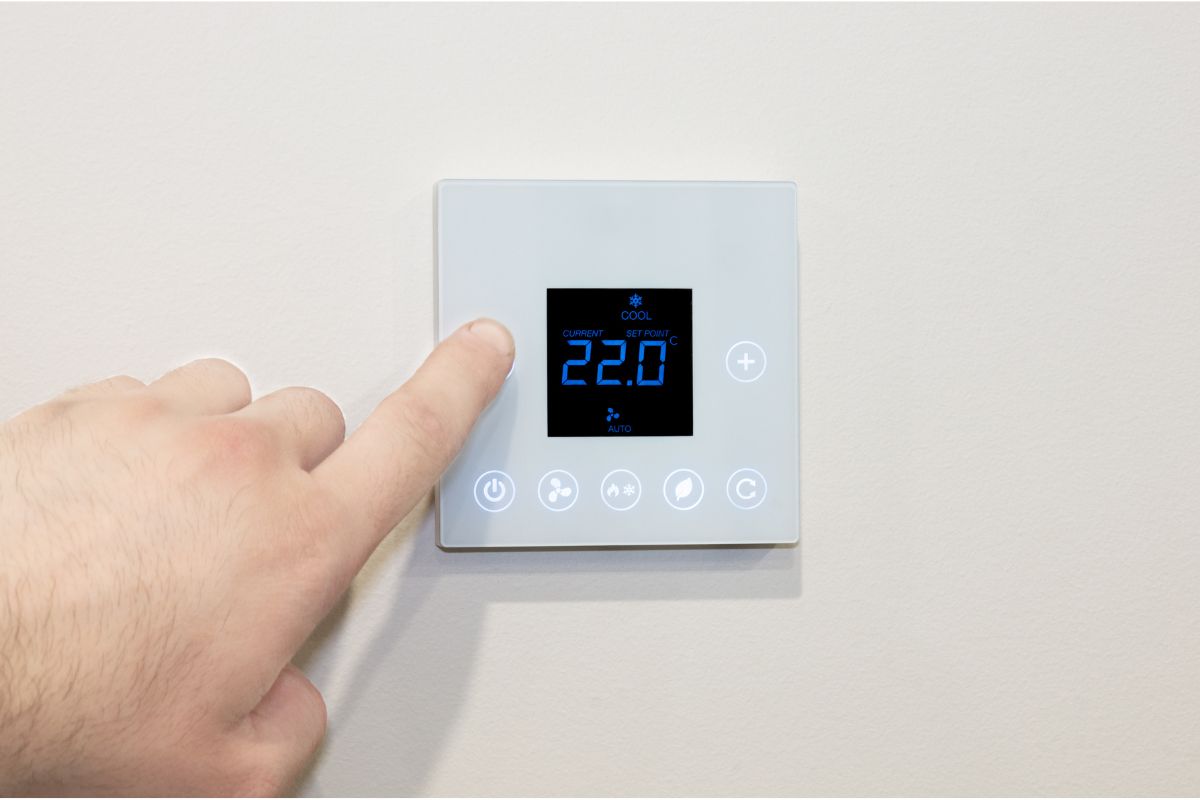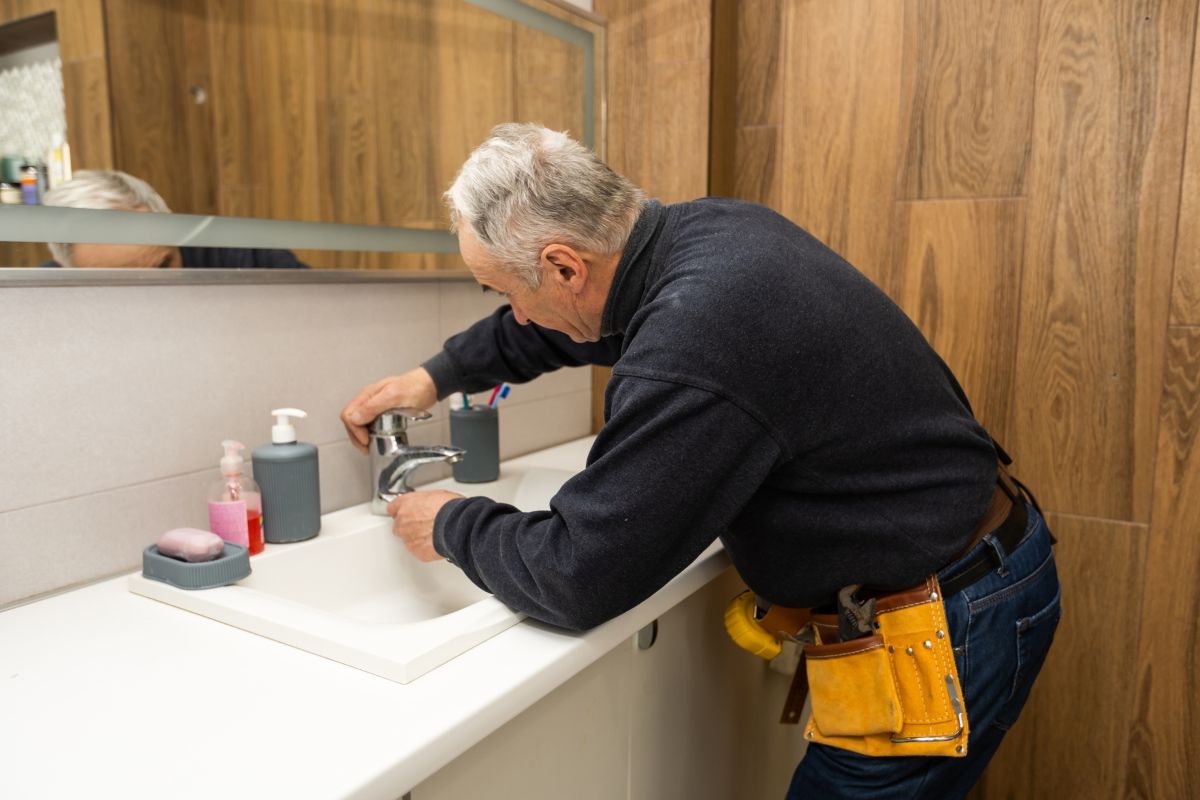Utility bills can really eat into your budget. But, with some smart moves, you can cut down on these costs. Start by looking at your bills and finding out where you’re using the most energy. By changing your daily habits, you can save money and help the planet too.
Try cooking at home more often, plan your budget better, and keep an eye on your spending. These simple steps can make a big difference in your wallet. They also help you use less energy and save natural resources.
Key Takeaways
- Assess your expenses to identify high-usage areas.
- Adopting energy-efficient practices can significantly lower energy bills.
- Home cooking and using discounts can help save money on utilities.
- Tracking expenses regularly aids in maintaining better financial health.
- Mindful adjustments in daily routines contribute to reducing utility costs.
- Conserving resources aligns financial strategies with personal values.
Adopt Energy-Efficient Practices

Using energy-efficient ways at home can greatly lower your bills and help the planet. By choosing smart appliances and lights, you save money and help the environment.
Use Energy-Efficient Appliances
Switching to appliances that save energy can cut your electricity use a lot. Modern appliances with Energy Star ratings use less power but work just as well. For instance, new refrigerators and washing machines use much less energy than old ones, saving you money over time.
Buying these efficient devices cuts your monthly bills and reduces your carbon footprint. It’s a win-win for your wallet and the planet.
Switch to LED Light Bulbs
LED lighting is a great way to use less energy. LED bulbs use much less power than old bulbs and last a long time. This means you replace them less often and save on maintenance costs.
LED bulbs also give off bright, consistent light, making your home look better. They’re a green choice too.
By using these energy-saving appliances and LED lights, you help the environment and save money. These easy changes can lead to big cuts in your utility bills and support sustainable living.
Monitor and Control Heating and Cooling

Managing your home’s heating and cooling is key to saving energy and cutting bills. Using a programmable thermostat and sealing air leaks can keep your home comfy and save energy. This helps with heating and cooling efficiency.
Program Your Thermostat
A programmable thermostat lets you set your home’s temperature based on your schedule. It keeps your home at the right temperature when you’re there and saves energy when you’re not. For instance, dropping the thermostat 7 to 10 degrees for eight hours daily can cut heating costs by 10% a year, says the US Department of Energy.
Thermostats like the Ecobee Smart Thermostat Premium and the Google Nest Learning Thermostat are top choices. They have 4.5-star ratings on Amazon and offer great scheduling and energy-saving features.
Seal Up Air Leaks
Sealing air leaks is a simple way to boost your heating and cooling efficiency. This means insulating and filling gaps in windows and doors with draft stoppers. A pro HVAC technician can find where air escapes with a blower door test.
This stops air from escaping, making your heating or cooling system work less often. It saves energy. Small steps like insulating windows and doors help keep your home at a steady temperature. This makes your home more comfortable and uses less energy.
Here are some numbers to think about:
| Measure | Potential Savings |
|---|---|
| Programmable Thermostat | Up to 10% annually on heating costs |
| Sealing Air Leaks | Consistent indoor comfort and reduced energy use |
| Smart Thermostats (e.g., Ecobee, Google Nest) | Average savings of approximately $50 per year |
By managing your heating and cooling well, you save energy, get better efficiency, and lower your bills.
Savings by Managing Water Usage

Reducing your utility bills can be easy by focusing on water conservation. The average American uses about 82 gallons of water every day. By using water wisely, you can save a lot of money.
Fix Leaky Faucets
Leaky faucets might seem small, but they waste a lot of water. Fixing them quickly can save thousands of gallons a year. This not only cuts your water bill but also helps the planet by using less water.
Use Water-Saving Appliances
Switching to low-flow appliances like showerheads and toilets can save a lot of water. A low-flow toilet alone can save up to 13,000 gallons a year. These appliances use water more efficiently, leading to lower bills over time.
Take Shorter Showers
Encouraging shorter showers can save a lot of water. It also lowers the cost of heating water, which is about 18 percent of your energy bill. Using efficient fixtures and shorter showers together can save even more.
| Action | Average Savings per Year |
|---|---|
| Fixing Leaky Faucets | Thousands of gallons of water |
| Installing Low-Flow Toilets | Up to 13,000 gallons of water |
| Using Water-Saving Appliances | Thousands of gallons of water |
| Taking Shorter Showers | Significant reduction in water and heating costs |
Tips to Save on Utility Bills
Want to lower your household expenses? Here are some tips to help you save on utility bills.
- Adjust Thermostat Settings: Lowering your thermostat by 7 to 10 degrees for 8 hours daily can cut heating and cooling costs by up to 10%.
- Lower Water Heater Temperature: Setting your water heater to 120 degrees Fahrenheit can save you hundreds of dollars a year instead of keeping it at 140 degrees.
- Unplug Unused Appliances: Unplugging appliances when not in use can save about $100 a year due to phantom energy use.
- Utilize Efficient Dishwashers: Modern dishwashers use about 5 gallons per load, while hand-washing can use 9 to 27 gallons, saving water.
- Change Air Filters Regularly: Changing air filters often can cut air conditioner energy use by 5% to 15%.
- Adopt Time-of-Use Plans: Using time-of-use plans with lower rates during off-peak hours can lead to big savings by running large appliances at these times.
| Strategy | Estimated Savings |
|---|---|
| Adjusting Thermostat | Up to 10% on heating and cooling |
| Lowering Water Heater Temperature | Hundreds of dollars annually |
| Unplugging Unused Appliances | Around $100 annually |
| Using Efficient Dishwashers | Saves on water usage |
| Changing Air Filters | 5% to 15% on energy use |
| Time-of-Use Electricity Plans | Lower rates during off-peak hours |
For more help in reducing utility costs, look into programs like the City of Austin’s Customer Assistance Program (CAP). It offers discounts and energy-saving improvements. By following these tips, you can save money and live more sustainably.
Unplug Unused Electronics
Many devices keep drawing power even when off, a fact known as phantom energy use. This can make up 5% to 10% of your home’s energy use, says the U.S. Department of Energy. By unplugging or using a power strip, you can cut down on standby power and save money.
The U.S. spends about $19 billion a year on idle electricity. “Vampire” devices like phone chargers and media players use 20% of home energy. Unplugging them saves the average home up to $100 a year, the U.S. Department of Energy says. It also makes your devices last longer by preventing overheating and electrical wear.
Some devices like modems and cable boxes need to stay plugged in. But many gadgets can be easily managed to save energy. Using smart plugs is a great way to cut energy use. These devices let you control power to appliances from anywhere, making it easy to save money.
Here are some tips to manage standby power:
- Put several items on a power strip and turn it off at night.
- Unplug devices like computers and TVs when not in use.
- Choose Energy Star-rated products for lower standby power.
Here’s a table showing how unplugging can save you money:
| Method | Potential Annual Savings | Additional Benefits |
|---|---|---|
| Unplugging devices post use | Up to $100 per household | Prolongs device lifespan |
| Using smart plugs | Variable, based on usage | Remote control of power flow |
| Energy Star-rated products | Up to 30% of energy costs | Lower overall energy consumption |
The Natural Resources Defense Council says cutting standby power could save consumers $8 billion a year. It would also prevent 64 billion kilowatt-hours of electricity use and 44 million metric tons of carbon dioxide pollution. Unplugging devices is a simple way to save money and help the environment.
Optimize Lighting Usage

Optimizing your home’s lighting is a great way to lower energy costs. By balancing natural light with smart lighting, you can cut down your electricity bills. This makes your home more energy-efficient.
Natural Lighting
Using natural light can greatly reduce your need for artificial lighting. It saves electricity and makes your home feel nicer. Here are tips to get more natural light in your home:
- Arrange your furniture to let more daylight into your rooms.
- Paint walls and ceilings with light colors to reflect more light.
- Add larger or extra windows to let in more sunlight.
- Use mirrors to bounce daylight deeper into your room.
Use Smart Light Switches
Smart lighting systems change how you control your home’s lights. They let you set lighting levels based on when you’re home, the time, or your needs. This helps save energy. Here are the benefits:
- Smart lights can turn on or off automatically, saving energy.
- They can dim, giving you the right amount of light without wasting energy.
- These systems work with voice commands through Amazon Alexa or Google Home, making things easier.
| Lighting Option | Energy Savings | Average Cost |
|---|---|---|
| Natural Light | Reduces artificial light usage drastically | Initial cost of window treatments |
| LED Lights | Save around $225 per year | Approx. $5 per bulb |
| Smart Light Switches | Optimizes energy usage based on need | Starting from $20 |
Using natural light and smart lighting can really help lower your bills. It also helps the planet by using less energy.
Regular Maintenance of Appliances
Keeping your household appliances in good shape is key to their efficiency and avoiding extra costs. It saves you money and makes your appliances last longer. Let’s explore why appliance upkeep is so important.
Starting with preventative maintenance, like cleaning filters and checking for leaks, can stop unexpected breakdowns. In the USA, homeowners spend about $6,139 a year on appliance upkeep. This can cut down on repairs and replacements.
Also, regular preventative maintenance can lower your energy bills over time. For example, keeping your kitchen appliances running well can save you money on utilities. Appliances that are well-maintained use less energy, which means lower bills and less harm to the environment.
Benefit Comparison:
| Without Regular Maintenance | With Regular Maintenance |
|---|---|
| Higher risk of sudden breakdowns | Reduced risk of unexpected failures |
| Increased energy consumption | Improved energy efficiency |
| Shorter appliance lifespan | Extended appliance lifespan |
| Higher repair and replacement costs | Lower overall maintenance costs |
Manufacturers often need regular appliance upkeep for warranty coverage on new appliances. This shows how important it is to take good care of them. Mixing DIY maintenance with professional help ensures your appliances work well and last longer.
Simple actions like vacuuming the fridge coils and cleaning the dishwasher filter help keep your appliances efficient. Adjusting settings and testing them regularly keeps them running right. Fixing small problems early with preventative maintenance stops big, expensive repairs later.
Regular maintenance of appliances saves money in the long run and boosts your home’s energy efficiency. It helps your wallet and the planet too.
Reduce Dependency on Electric Clothes Dryer
Electric clothes dryers use a lot of energy in our homes. By making a few changes and using energy-efficient laundry tips, you can save a lot on your bills.
One great way to save money is by drying your clothes outside or on a rack inside. This method cuts down on the need for a dryer and lowers your energy use. It also helps your clothes last longer by avoiding heat damage.
When you must use the dryer, here are some tips to save energy:
- Dry Full Loads: Make sure the dryer is full to use it efficiently.
- Lower Heat Settings: Use low heat to save energy but still dry your clothes well.
For more savings, think about getting an ENERGY STAR® certified dryer or a heat pump dryer. These use 40-50% less energy than regular dryers. They can really help save energy at home.
Here’s how much you could save:
| Dryer Type | Energy Consumption (kWh/year) | Annual Savings |
|---|---|---|
| Standard Electric Dryer | 900 | — |
| ENERGY STAR® Certified Dryer | 720 | $15 |
| Heat Pump Dryer | 450 | $45 |
Utilize Home Automation for Savings
Home automation can greatly lower your utility bills and lead to automated energy savings. By using smart technology like automated thermostats and smart power strips, you can manage your home’s energy use better.
Automated Thermostats
Automated thermostats change your home’s temperature based on your daily habits. This means you only use energy when you need it. It helps keep your home comfy while cutting down on energy costs.
A smart thermostat can save up to 15% on heating and cooling energy. Even though it costs a bit more at first, the savings over time make it a key part of your home automation.
| Feature | Benefit |
|---|---|
| Daily Routine Adjustments | Reduce unnecessary heating/cooling |
| Remote Control | Adjust temperatures while away |
| Energy Reports | Track and monitor energy use |
Smart Power Strips
Smart power strips take energy-saving further by controlling power to devices based on how often they’re used. They turn off power to devices not in use, stopping energy waste from standby mode.
Adding smart power strips to your energy-saving plan can cut your utility bills a lot. For example, a family spending $2060 a year on bills could save up to $100 by using these strips to stop standby power use. These strips also let you control devices from anywhere with a smartphone app.
| Feature | Benefit |
|---|---|
| Auto Shut-off | Eliminates standby power consumption |
| Remote Control | Convenience of managing devices remotely |
| Energy Monitoring | Track and optimize power usage |
Energy Audit for Detailed Insights
Getting a home energy assessment can give you deep insights into how you use energy. A detailed inspection, or an energy efficiency audit, shows where energy is wasted and where you can improve.
One big find from an energy audit is if your home lacks enough insulation. This affects how well your home stays warm or cool. For example, newer homes should have about 14 inches of insulation in the attic. Walls should have an R-20 insulation value.
An energy efficiency audit gives your home a score from 1 to 10, with 10 being the best. The cost of this audit can pay off in a year by saving on your bills. The U.S. Department of Energy says following an audit’s advice can cut your energy bills by 5-30% each month. It also helps meet energy efficiency rules, avoiding fines.
There are different kinds of energy efficiency audit options. A walk-through audit is quick and cheap, great for beginners. A full audit gives detailed advice, costs, savings, and payback times for upgrades.
During a home energy assessment, experts use special tools. They use power meters, thermal cameras, airflow meters, and energy modeling software. This tech helps them understand your energy use and how well your systems work.
The audit’s results give you specific ways to save energy and money. You might switch to LED lights, add insulation, or update your heating and cooling. Making these changes can save you a lot over time.
Conclusion
Lowering utility bills needs a mix of daily habits, smart tech, and careful consumption. This approach helps save money and is good for the planet. By choosing energy-saving appliances and using smart home tech, you make smart choices.
Using energy-efficient devices can save money over time. For example, LED bulbs cost more at first but save a lot on energy. Also, setting your thermostat right can cut down on heating and cooling costs.
Simple actions like hanging clothes to dry, fixing leaks, and using less water can save money and help the environment. A home energy check-up can show where you can use less energy. By following these tips, you can save money now and live more sustainably.










